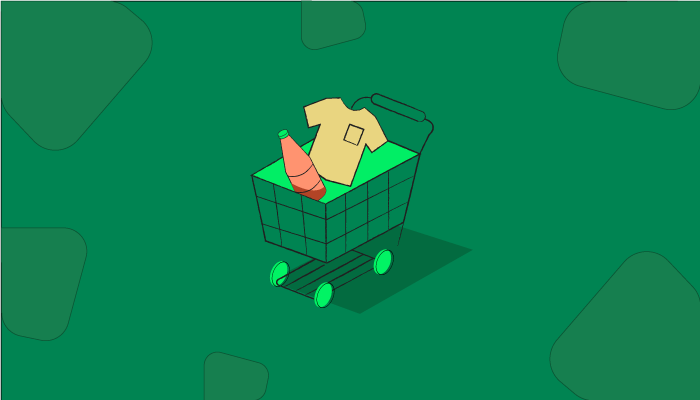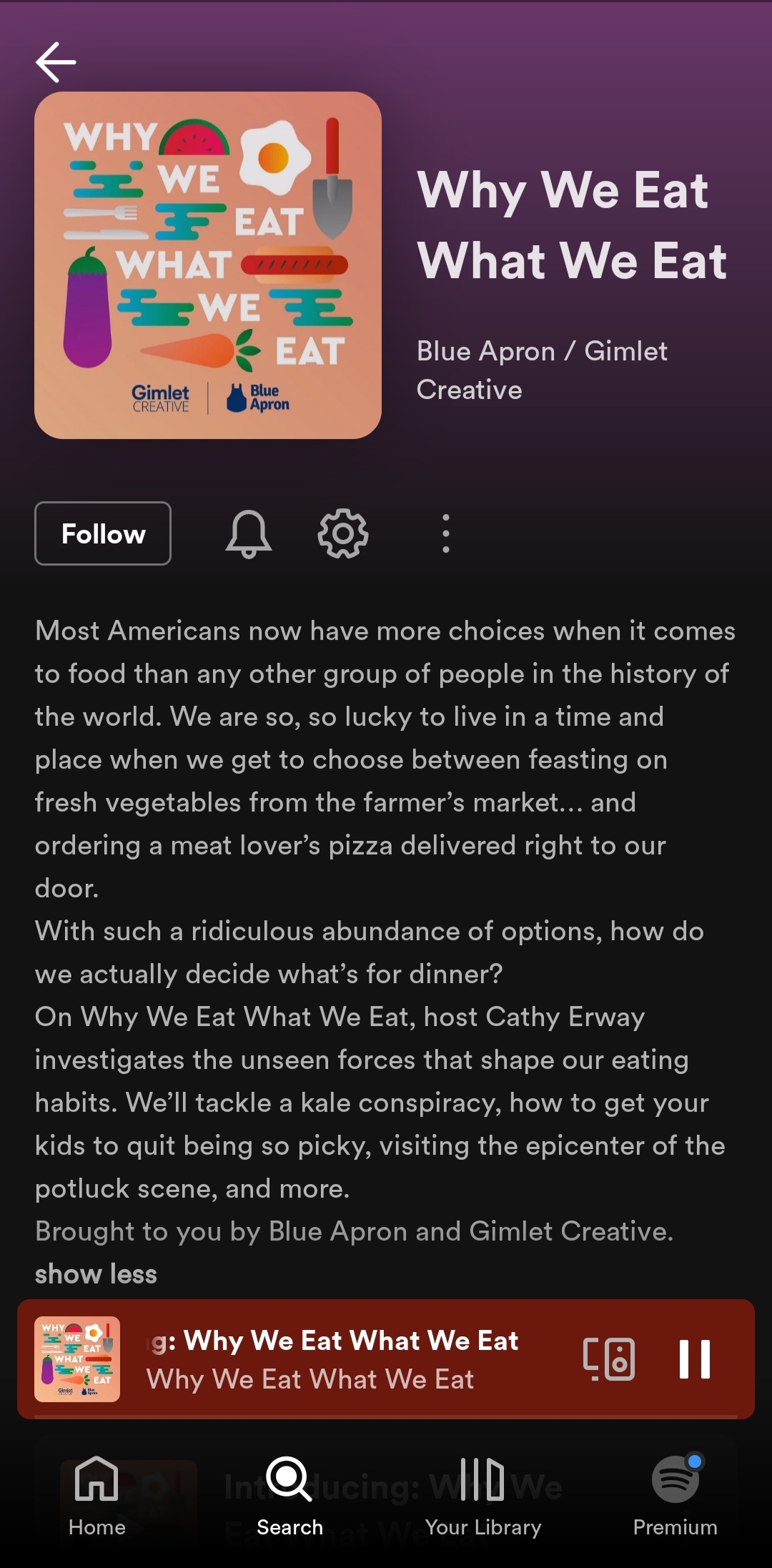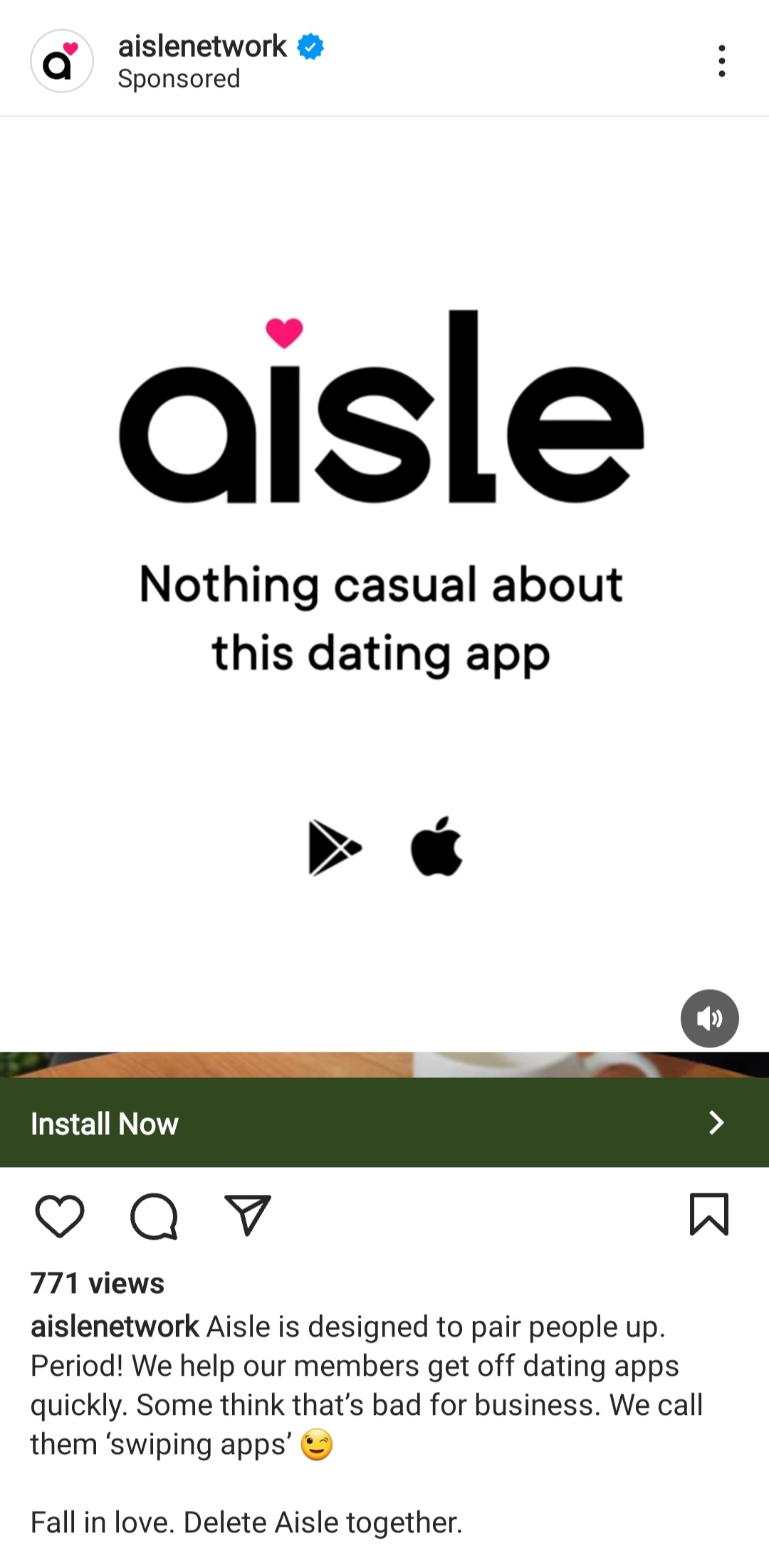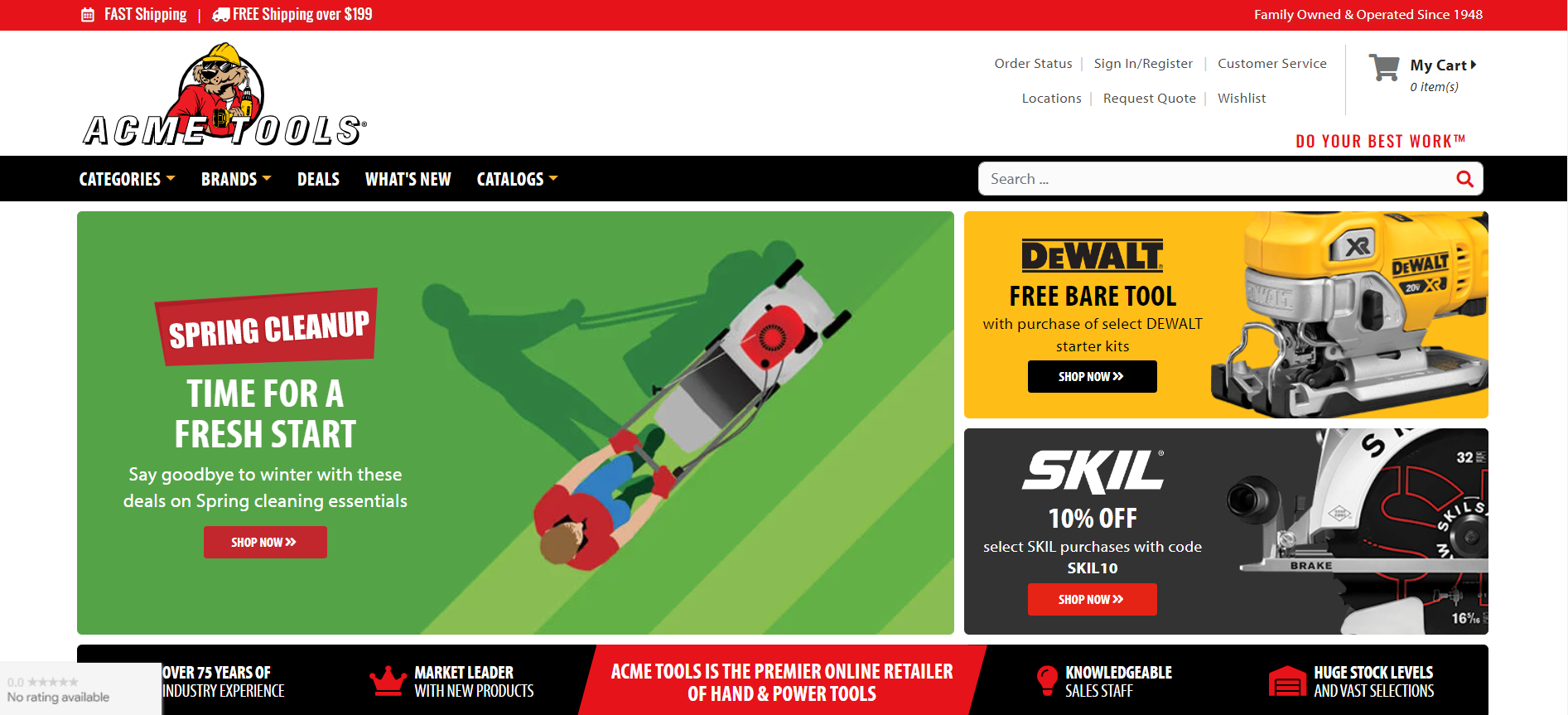- HOME
- Ecommerce marketing
- The ultimate guide to ecommerce marketing
The ultimate guide to ecommerce marketing

I once landed on a website that sold (can you guess)...aglets. It is that plastic bit at the end of shoelaces which no one notices. Yet there was an entire website selling them. It's equal parts incredible and intimidating how the online space is brimming with entrepreneurs selling aglets and every other thing you can possibly think of.
However, this isn't entirely surprising. Ecommerce has been around for decades now, but its meteoric rise (even more so following the pandemic) was something for the books. The revenue from retail ecommerce businesses in the US alone was approximately estimated at $1 trillion in 2023. It is predicted that 20.8% of retail purchases will happen online in 2023. There are plenty of statistics available online to drive home the point that ecommerce is not going to stop growing anytime soon.
This could be the best time for aspiring business people to test the ecommerce water. As always, there is a caveat. In a space where millions of faceless entities are competing for attention, it can be tough to succeed. The silver lining is that you can put a face to your brand with marketing, and stand out from the rest.
In this definitive guide to ecommerce marketing, you'll get a quick tour of online marketing essentials. In the end, there are resources for you that will let you take a deep dive into marketing.
Ecommerce marketing funnel
Rightfully known as the conversion funnel, an ecommerce marketing funnel shows the path shoppers traverse until they make a purchase on your website. From merely browsing your website and creating wish lists, to adding products to their cart and finally completing a purchase, there is a journey your customer takes. They move from one stage to another when you target them with the right message, persuading them to take the right action. So, know your funnel.
Top funnel (ToFu): Call this the awareness stage, where a consumer is searching online for a product and then stumbles upon your company. You have to pique their interest.
Middle funnel (MoFu): This would be the consideration phase where a consumer is hooked by your brand. Now that you have their attention, you need to convince them that your products are the best.
Bottom funnel (BoFu): In the conversion stage, customers are thoroughly convinced to buy, and finally end up making the purchase.
If you have designed a great website that gives buyers a seamless shopping experience, besides offering good products and customer service, you are likely to reverse the funnel too. That would mean your customers will love you enough to buy again and have their friends buy from you too. (You don't have to pursue them, they'll pursue you; ergo the funnel has been reversed.)
Loyalty: When customers return to your website to repeat a purchase and then begin to order from you frequently, you've earned yourself a loyal customer. Although aware of alternative options, they choose your brand over others because they are confident of the quality, service, and that they'll have a smooth buying process.
Advocacy: Some customers go on to become fiercely loyal and start advocating for your brand. They positively rate and review your products online and they talk about them publicly. This word of mouth marketing will organically increase awareness about your brand and have more people try your products.
The AIDA (Awareness/Attention, Interest, Desire and Action) model is similar and touches upon the progression of shoppers who initially discover a brand, become interested in it, then grow a strong desire to own its offerings and finally purchase it. However, customers may drop at various stages and resume their journey at different points, so the buying journey may not always be linear. It is important to know that customers in each stage think differently and you must talk to them in the right tone—that is what the funnel is all about.
There are various marketing channels that will allow you to interact with your audience, helping them move from one stage to another. Before that, you need to be clear about a few things that are key to your ecommerce marketing strategy and marketing plan. They are:
Mission: A company's goals and objectives and the steps the organization takes to achieve them is called a "mission." It focuses on the present, and highlights the current enterprising activities of the company.
Vision: The vision statement defines the aspirational goals of the company that will help it reach a desired state. It focuses on the future and describes what the company wants to become in the future.
Know your target audience: Find out the age range, occupation, income levels, interests, challenges, and requirements of your audience. With this information, you can properly gauge to whom you are offering a solution, and adjust the language and tone of your marketing.
Problem your product is solving: Find out the problems your customers are looking to solve with your product. Get into the specific, necessary details about how your product will be the solution for a niche segment of people whose problems aren't being effectively addressed by existing products.
Competitor analysis: Understanding your competition enables you to grow. Keep a close eye on your market competitors. Do detailed research about their products, their marketing, their strengths and weaknesses as a brand, and more.
Having these details and translating them into all marketing messages across all mediums is crucial. Make these points accessible to all those involved in marketing and sales. No matter where and how they interact with your company, the buyers will know that there is a uniform, consistent image of the brand (all the more reason why they will trust and love your business).
Ecommerce marketing strategy and marketing plan
With the above points in place, you can start writing your marketing strategy. Your ecommerce marketing strategy should be an overarching framework and must include marketing initiatives to help you achieve your business goals, such as a leap in revenue or customer base, or a pronounced brand presence. It needs to give direction to your marketing campaigns without delving into minute details.
Once you set up your marketing strategy, you can get cracking on your marketing plan. The plan gets into specific details of your strategy; it elaborates on how to implement the strategy. There'll be various campaigns within the structure, each of which will be allotted budgets and time, and KPIs—all of which must add up to what has been charted under your marketing strategy.
Marketing channels
To fulfill your marketing goals, you must tap into different marketing channels through which you acquire, convert, and retain customers to grow in terms of revenue, business, and prominence. Here are a few prominent ones:
Social media
An example of how brands can utilize social media
Use social media platforms to talk about new products, the unique selling proposition (USP) of your offerings, any useful information about a industry-specific subject (information that is not product-centric), and other things that'll improve brand awareness and drive traffic to your website.
Additionally, use it to listen to what your buyers are saying, be it a compliment, criticism, or a particular solution they need from you. Gradually, you can build a community around your brand through your social media channels. Check for impressions, views, likes, comments, shares, saves, and other engagement metrics to measure effectiveness. You can also target your audience with paid text, image, video, or carousel ads on social media.
User-generated content (UGC)
Observe how a brand is turning an online review into a social media post
Any positive mention of your brand including written posts, images, videos, podcasts, and reviews by people (not brands) can earn you a brownie point, or a customer in this case. This is where loyalty and advocacy, which we discussed earlier, kicks in, with customers vouching for your brand. Since it is neither paid nor endorsed by brands, these posts are all the more believable and authentic. You can use this social proof as ads to target other buyers.
Content marketing
Content marketing is a strategic way to build long-term relationships with your customers by providing them with useful and relevant information. You can have:
ToFu content - Short articles, guest posts, infographics, videos, and podcasts. Here's an example of a podcast that's run by Blue Apron, an American meal kit company.

MoFu content - Blogs, FAQs, eBooks, comparison articles, case studies, customer testimonial videos, and masterclasses or similar online courses. Williams Sonoma that sells cookware and home furnishings conducts classes to teach you a culinary skill.
BoFu content - Research papers, market reports, and downloadable content like product comparison tables, whitepapers, eBooks, detailed guides, and on-demand webinars.
You can choose to collect the names and email addresses of shoppers while sharing high-level resources. The form submission will indicate serious interest and it will allow you to get in touch with them later. Direct and indirect traffic to your website, page views, form submissions, sign ups, average time visitors spend on your page, bounce rate, and other things can be KPIs.
Search engine optimization (SEO)
Perform keyword research, check how you are ranking currently for keywords, and work on optimizing your pages for search engines to rank them better on search engine result pages (SERPs). Maintain a clean website architecture with smooth navigation. Incorporate keywords in your homepage, product pages, blogs, FAQs, and other places. Audit your SEO efforts, track the performance of your pages, and keep working on them.
Coupon marketing
Revolv welcomes its website visitors with a discount popup coupon on their website
Everyone loves a coupon. You can design coupons for different kinds of customers. You can always woo a new website visitor with a coupon code for their first purchase. For those who may be a lingering browser but still haven't clicked the checkout button, consider including a time-based coupon in which they have only a few hours to claim the offer. To your faithful customers, offer special coupons like an anniversary or birthday coupon code. Have them as pop-ups, banners, or in emails. If used effectively, you may see profits, clearance of slow-moving products, and other business benefits.
Paid ads

An example of a paid ad on Instagram
It can be tough to get noticed amongst competition, even more so if you rely only on organic marketing channels. To help, you can allot a budget for paid ads to pop up on your customer's feed. Your brand can also appear as a text ad when they are searching for something specific, or it can show up as image ads on a website they are browsing. You can choose between pay-per-click (PPC) ads, text ads, responsive display ads, video ads, product shopping ads, retargeting ads, and several other options to get noticed by your audience.
Influencer marketing
KitchenAid, the home appliance brand, has Jennifer Garner make recipes using their kitchenware
Hearing a favorite Instagrammer or a celebrity recommend a specific brand can convince a buyer to try it for the first time. Use influencer marketing to improve brand awareness. Research and make a list of influencers who can best represent your brand. Make sure they have a good reach, engagement, and followers. Check if they have genuine followers (as opposed to bots) and browse the comment section to check what kind of people interact with them and how. Check for the post's impressions, comments and engagement, website traffic through links from the post, and conversion rates.
Email marketing
Slurp Laboratories, a premium Korean skin care company, regularly sends out emails to its customers
This versatile marketing tool can be used in all stages of the marketing funnel. It is particularly helpful to ecommerce businesses that can use it to welcome first-time purchasers, nudge those who leave their shopping midway into buying (with abandoned cart emails), reward buyers with coupons, and announce offers, amongst other things. To check its effectiveness, take a look at open rates, traffic to the landing pages from emails (through UTM parameters to track the performance of your pages), bounce rate, email conversion rates, and forward/share rates.
Affiliate marketing
Notice the single sentence below the menu that mentions the article having affiliate links
This is a great marketing channel where you pay (or get paid, if you're an affiliate) only when specific results are achieved, such as a form submission or sign up, a follow on social media, or an actual purchase. Since it won't eat into the marketing budget, it can be the perfect option for ecommerce businesses just starting out. Affiliates attract niche audiences owing to the specialized content they put out online and the clout they've earned. No wonder affiliate marketing drives 16% of ecommerce sales in Canada and the US.
Website

A website with smooth navigation, good loading speed, attractive photos and descriptions, and checkout page can boost your conversition rate
Although, not a medium in itself, having a good website matters because you are an ecommerce business and this is where you want your customers to land. Have a slick homepage with good loading speed, smooth navigation, and that's optimized for all devices. Aim to keep the bounce rate (percentage of visitors leaving the website without taking any action) low. The product pages should have great photos, clear and attractive descriptions, and spell out all product details and specifications. The checkout page must be glitch-free with as little distractions as possible. When all of this comes together, there are chances of a higher conversion rate.
Check your metrics
After acquainting yourself with the methods of marketing, make sure you also test the effectiveness of these campaigns. Try A/B or multivariate testing to check what is working in your favor.
A/B testing involves changing just one component of your message. You can have alternative headlines for a campaign and check which one brings you leads. You can otherwise change the color, text, or shape of a call-to-action button on a landing page or campaign and see how that works. You can run two kinds of social media posts with two different kinds of images or graphics and study which is getting the followers to react more. You can also experiment with different navigation patterns, page layouts, product descriptions or even SEO methods such as different meta descriptions or headings.
There are plenty of examples of online stores that tweaked one element to see exponential change. A Polish agricultural company added a CTA button in the window that'd pop up on the navigation bar when things were added to the cart, and increased the size of a CTA button. The overall purchase quantity doubled afterwards.
Multivariate testing allows you to play around with multiple variables, simultaneously, to see which combination produces the best outcome. Unlike A/B testing, you can change several components on your page such as headlines, images, CTA buttons, pricing, and more. By testing multiple elements all at once, an ecommerce marketer can understand how different elements interact with each other and impact user behavior. It is a powerful way to optimize conversion rates and improve overall marketing performance.
In summary
If you are still here, you must have plans to take your ecommerce business to great heights with the help of marketing. Here are some links to previous articles with infographics, template structures, sample tables, and plenty of other useful information on:
Ecommerce marketing and ecommerce marketing channels such as social media, content marketing, SEO, affiliate marketing, coupon marketing, and more, and how you can use them on Zoho Commerce.
Marketing strategies for your ecommerce store, marketing funnel (top, middle, and bottom funnel) and the AIDA (Awareness, Interest, Desire, Action) model along with goals, paid and organic marketing channels, and ROI for each stage of AIDA model.
Marketing plans for your online business, which are different from marketing strategies, and five steps to execute your marketing plan that has tables and sheets for you.
